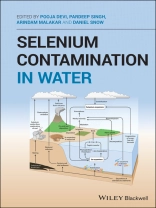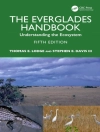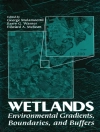The contamination of environment and water resources by Selenium (Se) and its oxyanions from various sources are emerging contaminants of significant health and environmental concern. The primary sources include agricultural drainage water, mine drainage, residues from fossil fuels, thermoelectric power plants, oil refineries, and metal ores. Various methods and technologies have been developed which focus on the treatment of selenium-containing waters and wastewater. High concentrations of selenium in water cause various adverse impact to human health, such as carcinogenic, genotoxic, and cytotoxic effects. But in the lower concentrations, it is a useful constituent of the biological system. The range between toxicity and deficiency of selenium is minimal (40 to 400 mug per day), due to its dual nature.
Selenium Contamination in Watercontains the latest status and information on selenium’s origin, its chemistry and its toxicity to humans. The book represents a comprehensive and advanced reference book for students, researchers, practitioners, and policymakers in working in the field of metalloids, in particular selenium. A special emphasis is given on its geological distribution, monitoring techniques, and remedial technologies. As such, the authors critically analyze the various techniques used for the monitoring and removal of selenium from water.
Featuring chapters arranged according to the major themes of the latest research, with specific case-studies from industrial experiences of selenium detection and removal, Selenium Contamination in Waterwill be particularly valued by researchers, practitioners, and policymakers in working in the field of metalloids including selenium.
Mục lục
Chapter 1 Mapping of Selenium toxicity and technological advances for its removal: A Scentiometric approach
Chapter 2 Selenium Distribution and Chemistry in Water and Soil
Chapter 3 Occurrence and Sources of Selenium Contamination in Soil and Water and Its Impacts on Environment
Chapter 4 Selenium Toxicity in Domestic Animals: Sources, Toxicopathology and Control Measure
Chapter 5 Positive and negative impacts of selenium on human health and phytotoxicity
Chapter 6 Various analytical techniques for Se determination in different matrix
Chapter 7 Voltammetric Sensors and Materials for Selenium detection in Water
Chapter 8 Optical Sensors and Materials for Selenium Determination in Water
Chapter 9 Biosensors for the detection of selenium in environment
Chapter 10 Physical and Chemical Methods for Selenium Removal
Chapter 11 Chemical method for removal and treatment
Chapter 12 Biological treatment advancements for the remediation of selenium from wastewater
Chapter 13 Nanomaterials for the Remediation of Selenium in water
Chapter 14 Harnessing Biogeochemical Principals for Remediation of Selenium Contaminated Soils
Chapter 15 Membrane separation technologies for selenium
Chapter 16 Intensifying approaches for removal of selenium
Chapter 17 Emerging threat of selenium pollution: a spatial analysis of its sources and vulnerable areas in India
Giới thiệu về tác giả
The Editors
Dr Pooja Devi is a Principal Scientist at CSIR-CSIO, India.
Dr Pardeep Singh is an Assistant Professor at PGDAV College, University of Delhi, India.
Dr Arindam Malakar is a Postdoctoral Research Associate at the Nebraska Water Center, University of Nebraska, USA.
Professor Daniel Snow is a Research Associate Professor at the Nebraska Water Center, University of Nebraska, USA.












